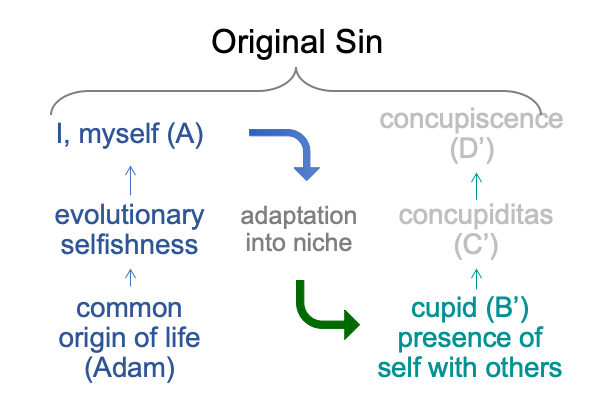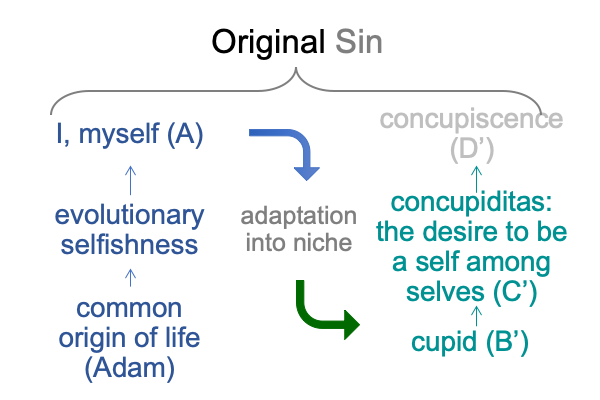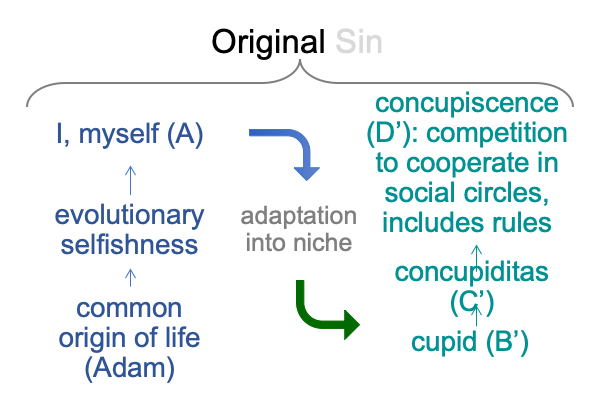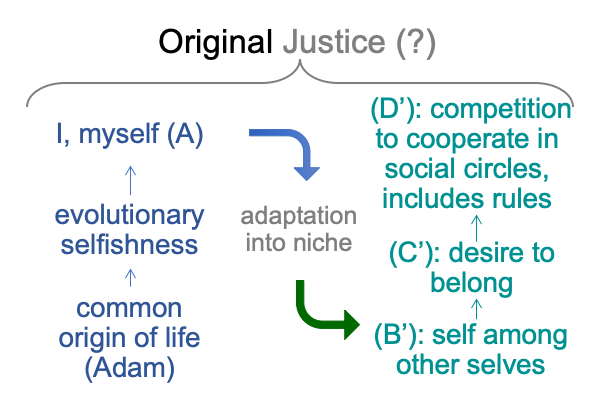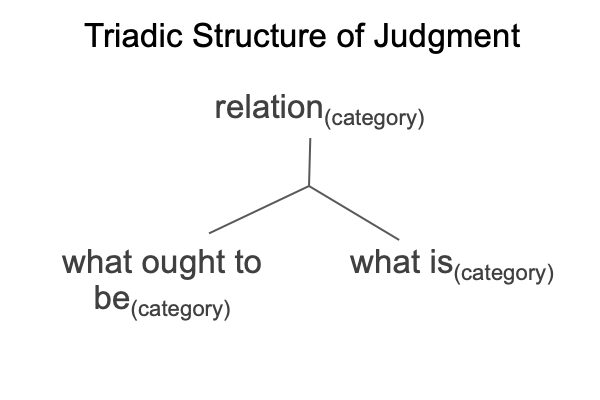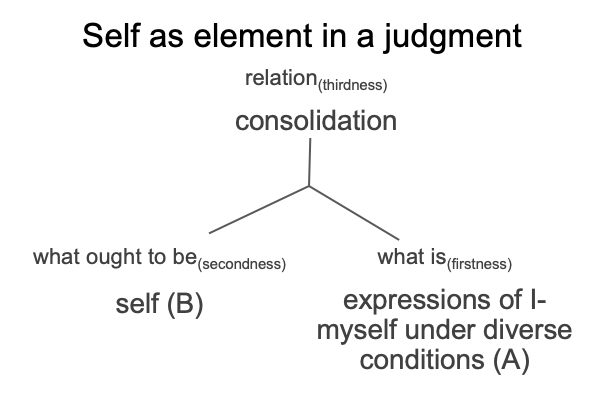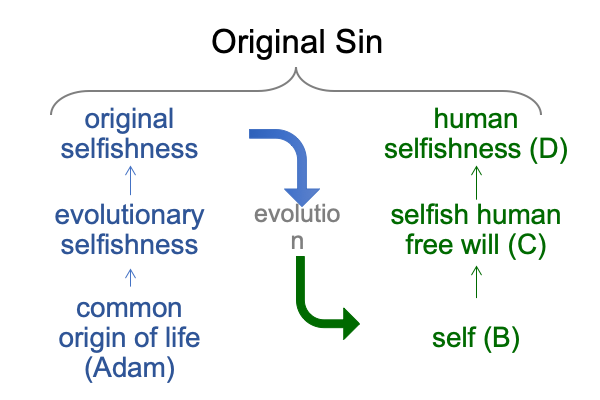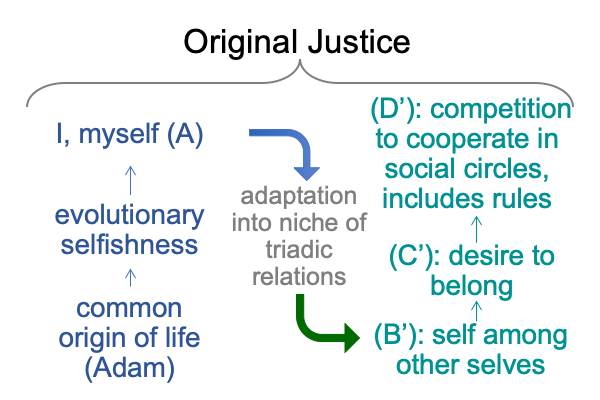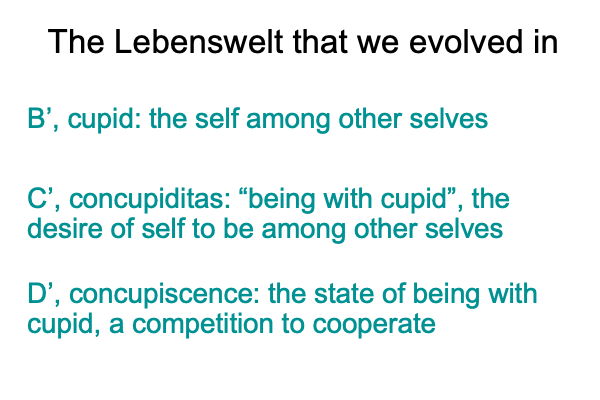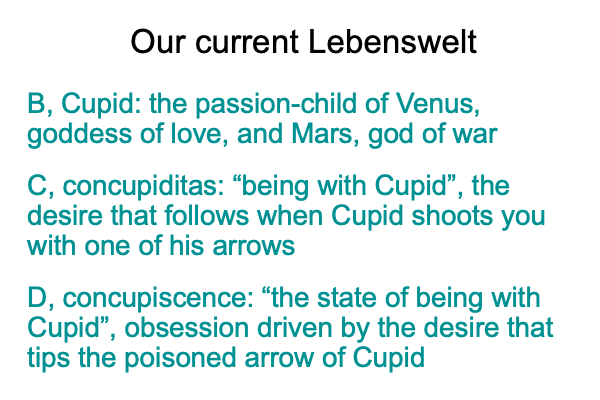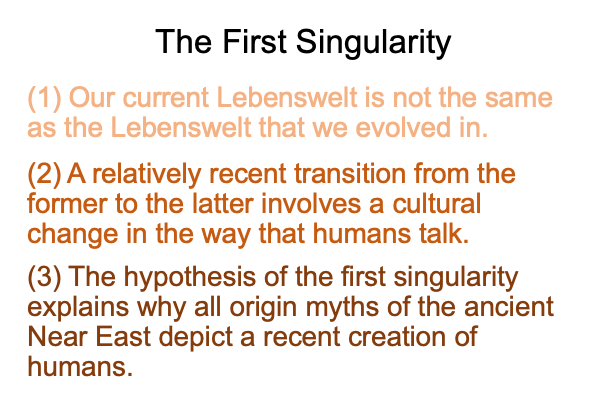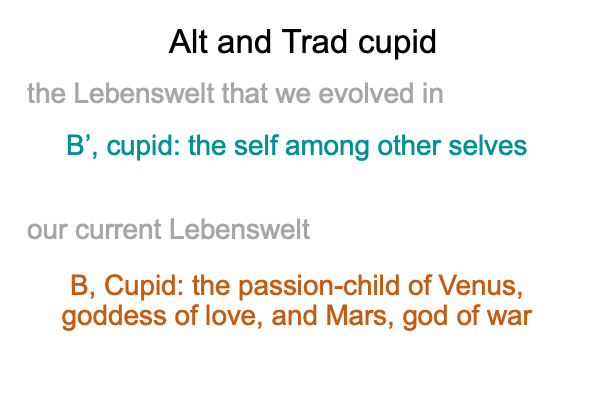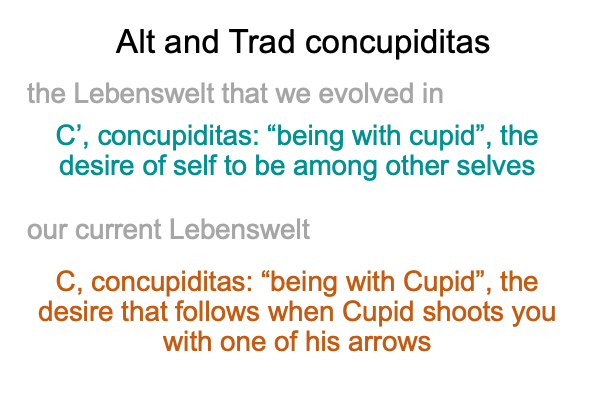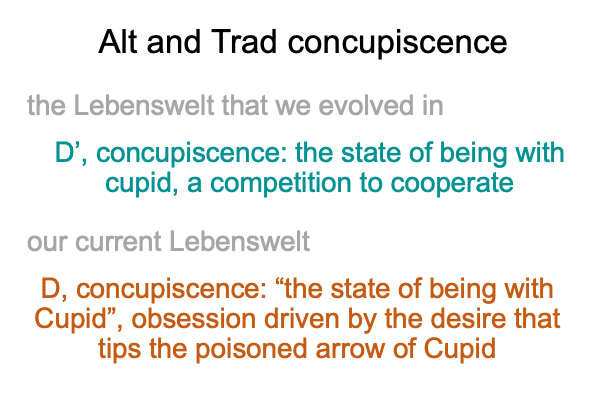Looking at Daryl Domning’s Book (2006) “Original Selfishness” (Part 6 of 16)
0037 In prior blogs, I associate a sequence of four waystations in the history of the word, “selfishness”, to four elements in Domning’s visualization of original sin.
0038 Traditional theological accounts of original sin fuse its universal and its moral realities.
The universal reality is direct descent from Adam and Eve, as proposed by Saint Augustine seventeen centuries ago. This universal reality has been debunked by modern genetics.
The moral reality is a corruption of human free will. People tend to be selfish, even with moral deliberation. This implies a fall from full rationality and self-control.
0039 Domning’s theological account separates original sin’s universal and moral realities. But, the separation is not complete, because original selfishness (A) evolves into the self (B).
Evolutionary selfishness (pre-A) culminates in psychological expressions of I-myself (original selfishness, A), which I associate to the initial terminus of the term, “human selfishness” (D). The passage involves the terms, “self” (B) and “selfish” (C). Moral deliberation enters the picture with the term, “selfish”.
The moral reality, the disordered practices of human selfishness, is nothing more than original selfishness, but now with moral deliberation.
0040 The association between four waystations in the history of the word, “selfishness”, with four elements in Domning’s visualization of Original Sin appears convincing.
So, I want try my luck with another composite term, “concupiscence”.
“Concupiscence” builds upon three technical expressions. These technical expressions associate to waystations (B, C and D) in this development of the word, “selfishness”.
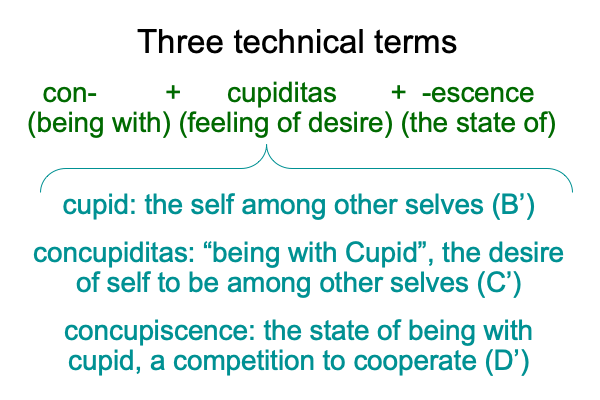
Note that these technical definitions do not correspond to traditional definitions of these words. I will get to that difficulty later.
0041 Once again, where am I going with this?
0042 The development of the word, “selfishness”, parallels Domning’s argument about the nature of original sin, once its universal and moral realities are separated.
The key step is the transition from the emphatic, I myself (A), to self (B), a noun. Domning attributes this step to evolution. The next step is the adjective, “selfish” (C), describing a tendency towards placing one’s own self above others. Here, moral constraints may come into play. “Selfishness” (D) reifies the adjective.
0043 Now, I want to repeat the procedure with the word, “concupiscence”. Concupiscence is traditionally used to describe the moral reality of original sin. The universal reality is descent from Adam, which now has been debunked by science.

